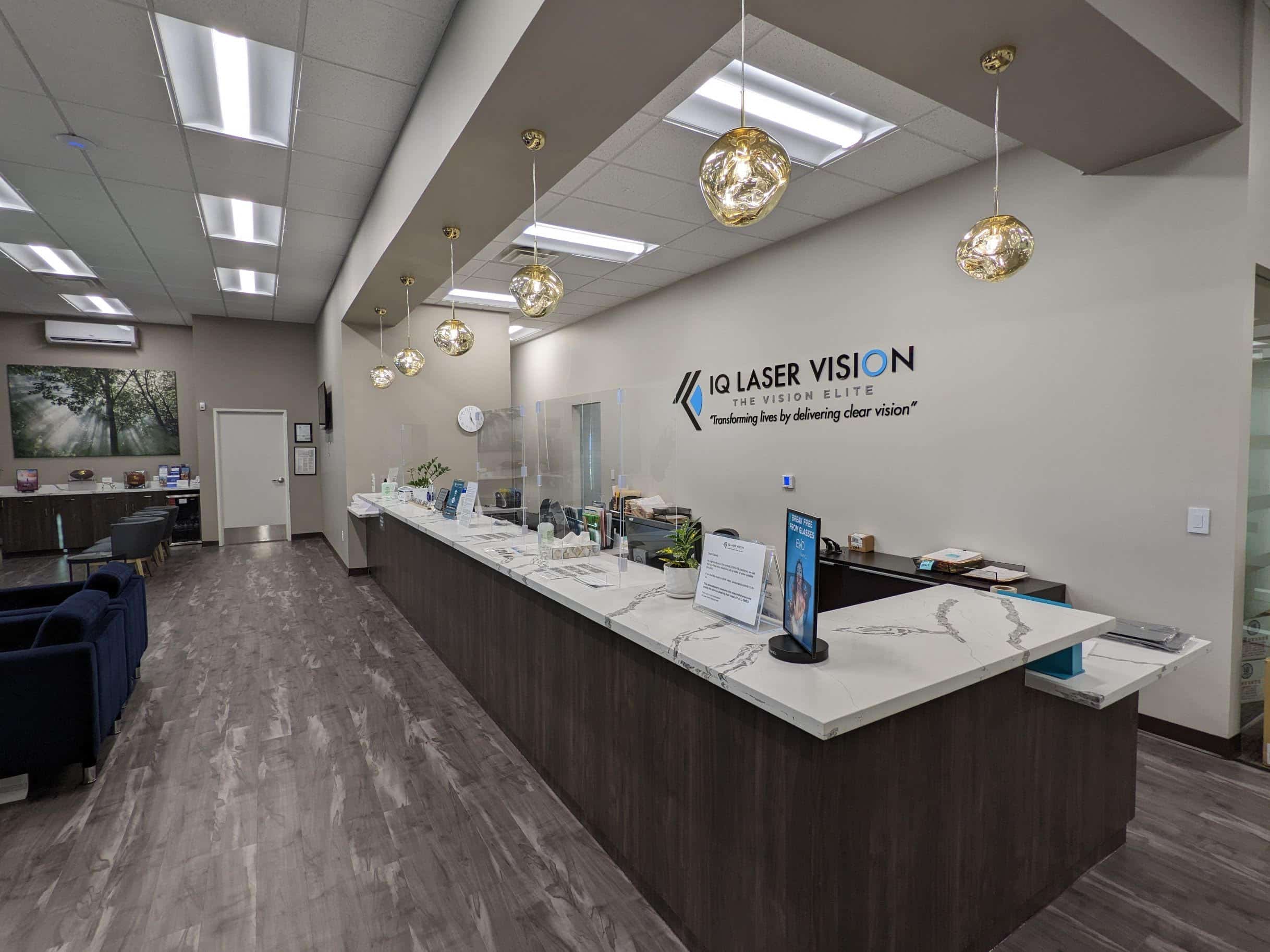Do you use reading glasses when you go to your favorite restaurant? If you’re tired of dealing with presbyopia, it’s time to say hello to something better. Keep reading to learn about refractive lens exchange (RLE)and how this exciting procedure will improve your life!
What is Presbyopia?

If fine print is just a little too small these days, it’s not just you. You can thank a common age-related eye condition called presbyopia for your difficulty reading the newspaper, seeing menus when you go out to eat, and seeing the tiny print on pill bottles.
So what is presbyopia, anyway? Presbyopia is an eye condition that occurs when the eye’s natural lens loses its flexibility. When this happens, seeing things up close becomes much more challenging, so it can suddenly seem like you can’t see what’s right in front of you anymore.
Can I Have Presbyopia and Cataracts, and are they the Same Thing?
One of the things that makes presbyopia confusing to understand is that some of its symptoms overlap with cataracts. Cataracts are another age-related eye condition that occurs when proteins in the natural lens begin to clump together, impacting vision and your ability to see clearly.
When you have cataracts, your vision may be blurry or feel like everything you see is through a foggy window. As cataracts progress, your vision will progressively worsen.
Eventually, most people with cataracts will need cataract surgery to remove the natural lens and restore their ability to see clearly.
Although you can absolutely have cataracts and presbyopia at the same time, they are not the same thing. Another thing that makes these eye conditions challenging to understand is the overlap in symptoms.
How do you know if your symptoms are due to cataracts or presbyopia? Cataract symptoms include:

- Blurry vision
- Double vision in only one eye
- Injuring yourself more often due to increasingly impaired vision
- Seeing glare or halos around light sources
- Finding it more challenging to drive at night
- Noticing colors have lost their vibrancy or now look muddy
- Needing more frequent prescription changes for your glasses and contact lenses
- Experiencing light sensitivity
Symptoms of presbyopia include:

- Blurry vision after trying to look at something up close, like while reading a book, using your phone, or sewing
- Finding it difficult to focus on things right in front of you, especially in low lighting
- Experiencing eye fatigue after periods of reading or other up-close work
- Needing to hold reading materials at arm’s length away from yourself to see them clearly
- Increasing the font size on electronic devices to see clearly
- Difficulty shifting your focus between things up close and far away from you
Although there is some overlap in symptoms between presbyopia and cataracts, it is possible to know the difference between them. If you suspect you could have presbyopia or cataracts, see your eye doctor at IQ Laser Vision. They can monitor your eyes and determine the next best steps.
What is Refractive Lens Exchange?

If dealing with reading glasses for the rest of your life isn’t exactly what you have in mind, you have other options. One of the most attractive of these is a vision correction procedure called refractive lens exchange or RLE.
Refractive lens exchange is a procedure that removes your natural lens from your eye and replaces it with an artificial lens called an intraocular lens (IOL). The IOL allows you to see clearly.
One of the best and most significant benefits of having refractive lens exchange is that you don’t have to worry about having cataracts after the procedure. So not only can you look forward to clear vision, but you can also put any worries you may have had about cataracts in the rearview mirror!
Plus, depending on the IOL you choose, you can achieve better vision than you’ve ever had in your life. Premium IOLs can correct refractive errors like nearsightedness, farsightedness, and astigmatism to reduce your dependence on visual aids.
They can also correct things like presbyopia. So, if you’re tired of reading glasses and love the idea of living a life free from visual aids, refractive lens exchange could be the way to go.
Am I a Good Candidate for Refractive Lens Exchange?

Although you may love the concept of a procedure like refractive lens exchange, it’s not something that’s right for everyone. You may be a good candidate for refractive lens exchange if:
- You’re 40 or older and have presbyopia
- You want to be free from the constraints of depending on reading glasses
- You’re severely nearsighted or farsighted with a prescription that falls outside of the treatment levels of other procedures like LASIK
- You have a stable prescription that’s remained unchanged for a year or more
- You have healthy eyes
- You have realistic expectations about what refractive lens exchange could achieve
If you think you could be a good candidate for refractive lens exchange, take the next step! Schedule your appointment at IQ Laser Vision in Los Angeles, CA!
Can I Still Have Refractive Lens Exchange if I Have Cataracts?

Although one of the things that prospective refractive lens RLE exchange patients love about the procedure is it means not worrying about cataracts in the future, you can still have the procedure if you have cataracts in their early stages. Refractive lens exchange is an almost identical procedure to cataract surgery.
So what’s the difference between the two? RLE involves removing the natural lens, which typically does not have a cataract formed on it, and replacing the natural lens with an intraocular lens. If there is a cataract, it will be in the early stages and will not significantly affect vision.
Cataract surgery involves removing the natural lens and the cataract where it’s formed on the lens. The cataract and natural lens are gently broken into smaller pieces before being removed and replaced with an intraocular lens.
Cataract surgery differs because it always removes a cataract from the natural lens, which is not a primary objective with refractive lens exchange. The end goal is the same: patients will see clearly after having their IOL implanted to replace the natural lens.
If you’re ready to say so long to reading glasses, it’s time to find out if you’re a good candidate for refractive lens exchange. Request your appointment at IQ Laser Vision in Los Angeles, CA, now!
Isn’t it time to banish the frustrations of reading glasses to the past and enjoy being able to see what’s around you again?























